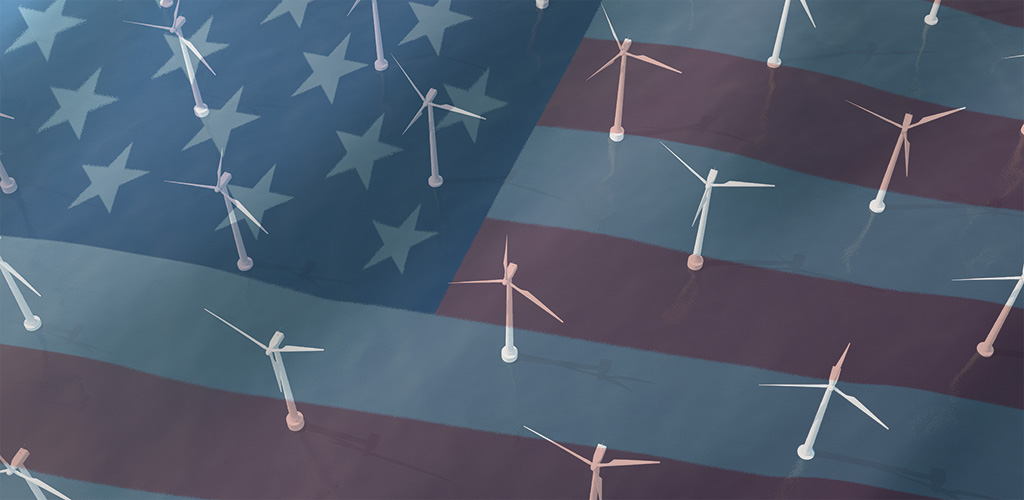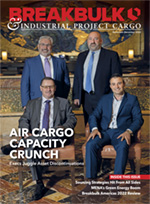Progress Toward Gulf of Mexico Offshore Wind

By Lori Musser
 Offshore wind energy in the Gulf of Mexico is on the radar. As U.S. east coast offshore wind farms are finally emerging, heads have turned toward the massive geography and unique challenges of the Gulf.
Offshore wind energy in the Gulf of Mexico is on the radar. As U.S. east coast offshore wind farms are finally emerging, heads have turned toward the massive geography and unique challenges of the Gulf.
The National Renewable Energy Lab, or NREL, has identified advantages for offshore wind energy in the Gulf of Mexico, including shallower waters and smaller waves, however, developments will have to accommodate typically gentler winds, occasional hurricanes, and weaker soil structure.
In its 2020 report, ‘Offshore Wind in the U.S. Gulf of Mexico: Regional Economic Modeling & Site-Specific Analyses,’ NREL selected six viable study areas from the 30-million-acre Gulf ‘call’ area. It also prepared a draft environmental assessment. There are now two draft wind-energy areas, or WEAs, on the drawing table.
John Filostrat is with the Office of Communications for Bureau of Ocean Energy Management, or BOEM. He said the first draft WEA is located approximately 24 nautical miles off the coast of Galveston, Texas, covers a total of 546,645 acres, and has the potential to power 2.3 million homes with clean wind energy. The second draft WEA is located approximately 56 nautical miles off the coast of Lake Charles, Louisiana, covers a total of 188,023 acres, and has the potential to power 799,000 homes.
Public comments on the draft WEAs closed Sept. 2, 2022. BOEM received 107 comments. As a next step, “BOEM will be issuing final wind energy areas and then a Proposed Sale Notice later this year. We plan to hold a wind auction in the summer of 2023,” Filostrat said to Breakbulk.
Lofty Federal Goals
A speedy process, as well as a vigorous supply chain and talented workforce, some innovation and
creativity, and a lot of investment and government support, are all necessary if industry is to create 30 GW of offshore wind power by 2030, as the Biden Administration has targeted.
In preparation, the federal government has beefed up BOEM to better oversee federal leases and permits for offshore wind farms, as well as the Federal Permitting Improvement Steering Council, which fosters inter-agency coordination, and the Wind Energy Technologies Office, to accelerate research and development. In addition, the new Inflation Reduction Act includes financial incentives and tax credits to incentivize investment in offshore wind projects, and in manufacturing of wind infrastructure and components such as support and installation vessels, to help develop the domestic supply chain.
According to a June 23, 2022 White House update, the Biden Administration has already: approved the nation’s first two commercial-scale offshore wind projects (Vineyard Wind and South Fork Wind, both now under construction); announced an ambitious leasing strategy to hold up to seven offshore wind auctions by 2025 (including areas in Gulf of Maine, New York Bight, Central Atlantic, and Gulf of Mexico, as well as offshore the Carolinas, California, and Oregon); held a record-breaking wind lease sale in the New York Bight, bringing in US$4.37 billion in winning bids; and introduced initiatives to deliver benefits to underserved communities and leverage union jobs and supply chain development, while accelerating wind development.
Role of Oil & Gas
Many of the vagaries associated with energy operations in the Gulf have been encountered and tamed by offshore oil and gas and its supply chain partners. Expanding into offshore wind may be a viable transition for many.
Walt Musial, who leads NREL’s offshore wind energy research platform, commented, when NREL’s economic modeling report was released: “As we seek to diversify the U.S. energy supply using ocean renewable resources, we are finding that the existing oil and gas industries in the Gulf are able to leverage their vast ocean-based capabilities to expand their businesses and capitalize on these new energy opportunities.”
Stig Kirkegaard is area head of key clients for A.P. Moller – Maersk. He said to Breakbulk: “The Gulf is better suited, from a logistics point of view. Key infrastructure, based on the historical oil and gas exposure is already in place. On the east coast, the U.S. will need to build this infrastructure before being able to fulfill the needs.”
Robert G. Wellner, executive director of supply chain specialist Liberty Green Logistics One, agreed that infrastructure required to support offshore wind construction and operation is more prevalent in the U.S. Gulf.
He noted: “There are certainly advantages to having a developed parallel industry,” including waterfront facilities, industrial facilities required to fabricate, local supply chains, vessels and workforce.
For example, existing industrial fabricators and service vessel builders might be able to rework their processes to produce offshore wind monopiles and feeder vessels. There may be patents, intellectual property, and talent too, that can aid in fast-tracking offshore wind development in the Gulf.
Wellner indicated that, in the Gulf of Mexico, support vessels may be ready for deployment on an offshore wind farm without an added mobilization cost.
He added: “Shipyards and large steel structural fabrication facilities are readily available. Experienced service providers and lessons learned will play a major factor,” in the advancement of the offshore wind industry.
One of the biggest challenges in the Gulf, according to Kirkegaard, is limited availability of installation vessel capacity. He sees a need for substantial investment to correct this situation, and to build out additional capacity at ports.
Other potential challenges may stem from conflicts with oil and gas majors. According to Wellner, “[Gulf] states may not be as supportive of renewable energy as east coast states. Because offshore wind supply chain costs will be tied to oil and gas supply chain market fluctuations, and because electricity is less expensive in Gulf coast states than in the Northeast, public and political support of Gulf coast wind projects will be essential.”
A Port Perspective
The Port of Lake Charles, Louisiana, is no stranger to wind power, having handled hundreds of blades and tower sections. Executive Director Richert L. Self said to Breakbulk: “An offshore wind facility could be ideally situated at the Port of Lake Charles’ Industrial Canal.” The site is 22 miles from the Gulf of Mexico and 58 nautical miles from a BOEM-designated wind area in the Gulf. It comes complete with 40-foot depth, a 1,400-foot turning basin, and 60 acres of available land with rail access.
Self said a feasibility study by Moffatt & Nichol identified potential for both a marshalling port and a wind manufacturing facility at the large-scale site.
He added: “Wind power development would diversify the Port of Lake Charles’ longtime energy mix surrounding the cargo and shipping needs of oil, gas and LNG. We’re already known as ‘America’s Energy Corridor,’ and we have the capacity and capability to serve wind power as well.”
Many ports along the Gulf coast do not have a heavy container presence and have not faced the supply chain issues and delays encountered by leading east and west coast container ports.
Deep-water access so close to a BOEM wind area has helped generate some buzz for the Port of Lake Charles. “Existing offshore wind developers and potential offshore wind operators have already expressed interest – because of our track record on energy, our infrastructure and our ideal site availability.”
Revamping Supply Chain
At the Breakbulk Americas 2022 offshore wind panel discussion in Houston in Sept., panelists noted the reliance, to date, of the emerging U.S. wind industry on European and other global component fabricators and supply chain participants. A.P. Moller – Maersk’s Kirkegaard said that while that reliance may continue for some elements, it makes sense for the U.S. to focus on building the larger components at home, to more easily meet sometimes stringent local content requirements.
Despite their long-term relationships with European and other global suppliers, the predominantly European-led development teams for America’s first offshore wind farms have been able to tap Gulf coast manufacturers with strong oil and gas expertise. They may be America’s best and speediest solution for competency and scale economies in fabrication and supply chain.
Unfortunately, Buy American may not be enough. Northeastern states will want to keep as many offshore wind jobs as possible close to home.
In general, the offshore wind industry requires larger laydown areas for offshore wind components such as nacelles, blades and monopiles than for their onshore equivalents. And the industry’s water carriage is complicated by the Jones Act cabotage laws, which typically require the use of U.S.-built/owned/crewed vessels for offshore wind installation and supply.
In addition to bringing wind energy ashore, the Gulf of Mexico has other potential offshore wind applications. For example, industry analysts suggest small turbines can be used for repositioning captured carbon into depleted under-the-seabed offshore oil and gas formations, or for powering equipment to convert desalinated water into green hydrogen, to be piped back to shore using existing oil and gas infrastructure.
The Gulf of Mexico’s future in offshore wind energy is bright, but it is a horse of a different color. The region’s offshore oil and gas background is a key differentiator, one already benefiting east coast offshore wind developments. That same background will provide even greater opportunities, and a few challenges, as the Gulf region develops its own unique offshore wind market.
Based in the U.S., Lori Musser is a veteran shipping industry writer.
Credit: Shutterstock
